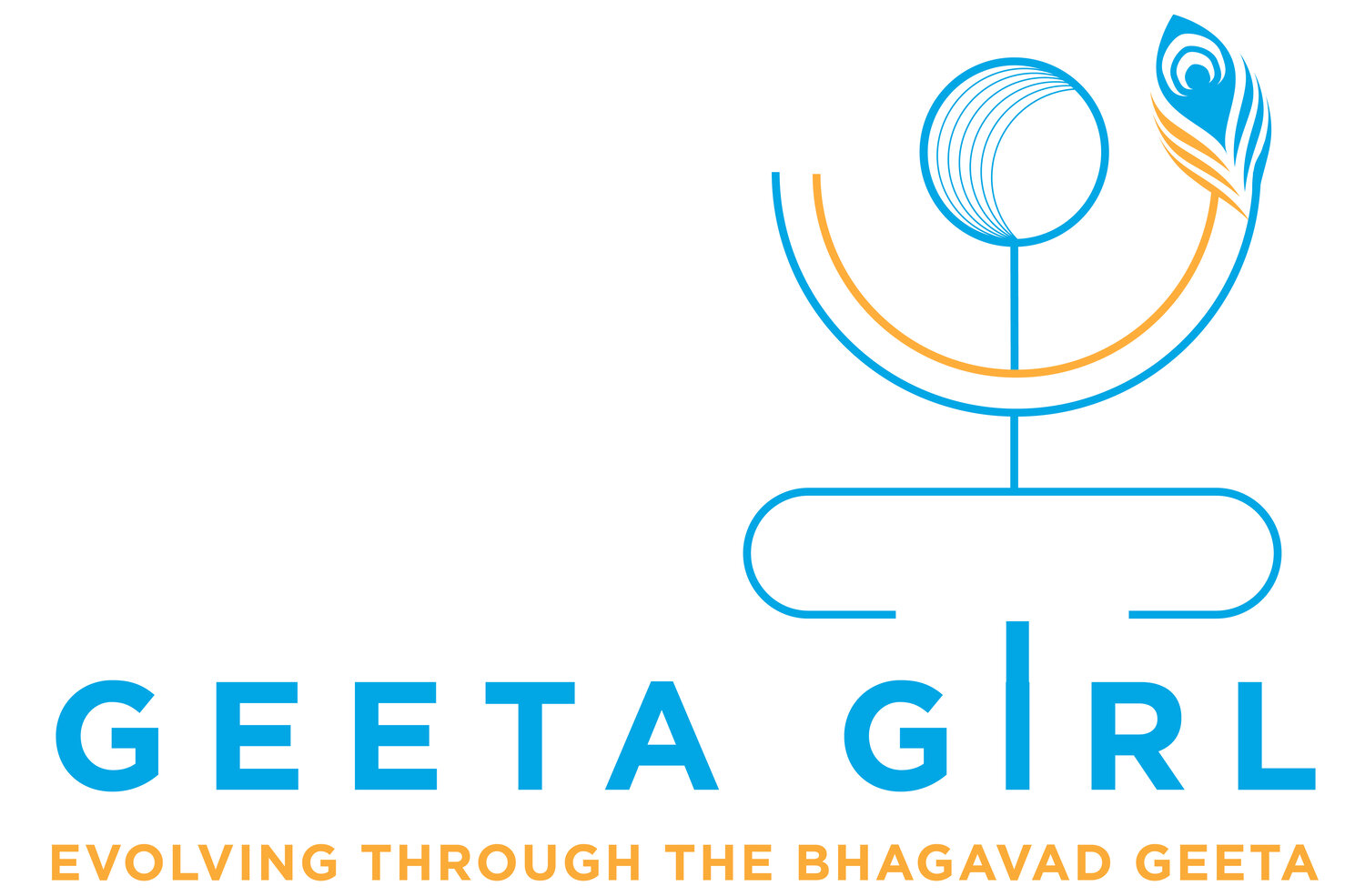BASIC CONCEPTS
The Bhagavad Geeta (BG) is written in Sanskrit, an ancient Hindu language. Here is a, hopefully simple, breakdown of basic Sanskrit terms which will be helpful in understanding the BG.
YOGA
The literal translation of this word is “Union”. In the BG, Yoga means the union of a human with The Universe, Nature, God, Krishna, The Force, whatever you wish to call this Power. We experience this Union when we feel completely in-synch; when we are empowered and feel that The Universe is with us in this moment, and we are at peace.
KARMA
The literal translation of this word is simply “action”. Therefore, when we do something good, this is called Good Karma and when we do something bad, this is called Bad Karma.
What people are usually most interested in is actually one’s Karmic Account, which is also referred to as Karma. It is one’s accumulation of good and bad deeds for which the consequences, if they don’t come immediately, will come to you in the future. At the most basic level, the theory of Karma boils to one simple phrase - As you sow, so shall you reap.
SAMSKARA
Your Samskara is basically your character; your nature, your talents, and your flaws. Your Samskara is the result of all your lifetimes of accumulated habits which now form your character. We are continuously working on developing our Samskara for the better or worse, depending on the habits we are currently practicing.
REINCARNATION
Reincarnation is one of the core beliefs of Hinduism; we believe that the soul is a fragment of God and as such is eternal. The soul enters a body and breathes life into it in utero, and then that body is born and goes through childhood, youth, adulthood, old age, and death. Then the soul enters another body and continues its journey taking its Karmic Account and Samskara with it.
DHARMA
There is no literal translation of this word. Most people translate Dharma to the word “duty” but that is not quite accurate or complete. Dharma means so much more. It means doing the right thing given your age, your chosen path in life, the time you are living in, the laws of the country in which you are, the people involved in the situation, and your education and ability.
GUNAS
A Guna is your mode of operation; in tech-speak, your IOS; the way you act. There are three Gunas:
Satvic – acting with wisdom, clarity, and calm.
Rajsic – acting with agitation, anxiety, being “all over the place”, over-excitable.
Tamsic – not doing anything at all, in dereliction of your duty, doing something resentfully, laziness, uncaring.
All beings on this planet have a combination of all three Gunas. Ideally, we are all working towards acting Satvically as often as we can.
SADHANA
Anything you are actively and regularly practicing with the intention of evolving into a better person is Sadhana.
